The early medieval period was a time of political transformation, where ambitious leaders laid the foundations of Europe’s first kingdoms. These pioneering kings established dynasties, defended their lands from invasions, and created systems of governance that influenced centuries to come. From strategic marriages to military conquests, their actions defined the course of European history. This article explores the founders of Europe’s kingdoms and the remarkable legacy they left behind.
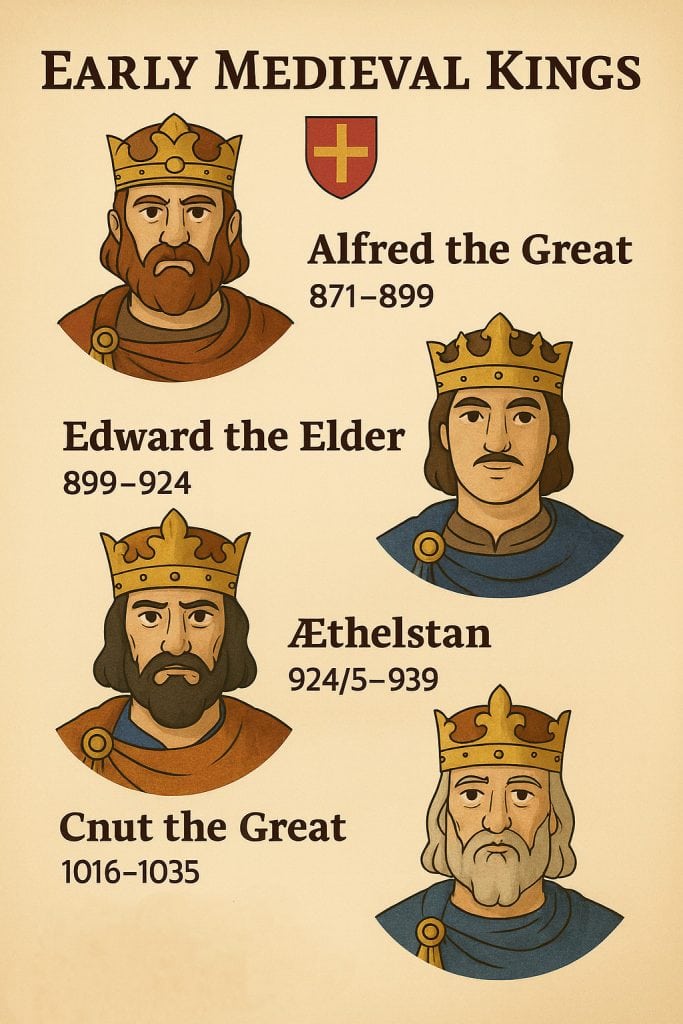
1. Alfred the Great (871–899)
Alfred the Great, ruler of Wessex from 871 to 899, is remembered as one of England’s most influential early kings. He successfully defended his kingdom against Viking invasions, most notably achieving victory at the Battle of Edington in 878, which led to the establishment of the Danelaw and a fragile peace.
Beyond warfare, Alfred was a major reformer. He reorganized the military, built a network of fortified towns (burhs), promoted literacy, supported translations of key texts into English, and laid early foundations for English law. His use of the title “King of the Anglo-Saxons” signalled his leadership over all English peoples not under Viking rule. He is the only English king known as “the Great.”

2. Edward the Elder (899–924)
Edward the Elder succeeded his father, Alfred the Great, in 899 and continued the effort to unify England under West Saxon rule. Like Alfred, he styled himself “King of the Anglo-Saxons,” a title reflecting his authority over the English peoples beyond Wessex.
Throughout his reign, Edward strengthened and expanded the kingdom. Working alongside his sister, Æthelflæd, Lady of the Mercians, he launched a series of successful campaigns that pushed Danish control out of East Anglia and the eastern Midlands. By 917, these regions had been brought firmly under English rule.
By the end of Edward’s life, nearly all of England—except for Northumbria—recognized his authority, marking a major step toward the eventual creation of a unified English kingdom. His reign laid essential groundwork for the accomplishments of his son, Æthelstan, who would become the first king to rule all of England.
⚔️ The Rise of Early Medieval Kings
After the fall of the Western Roman Empire, new kings emerged to lead fragmented tribal groups and establish Europe’s earliest kingdoms. Their leadership shaped political boundaries and cultural identities that still echo today.
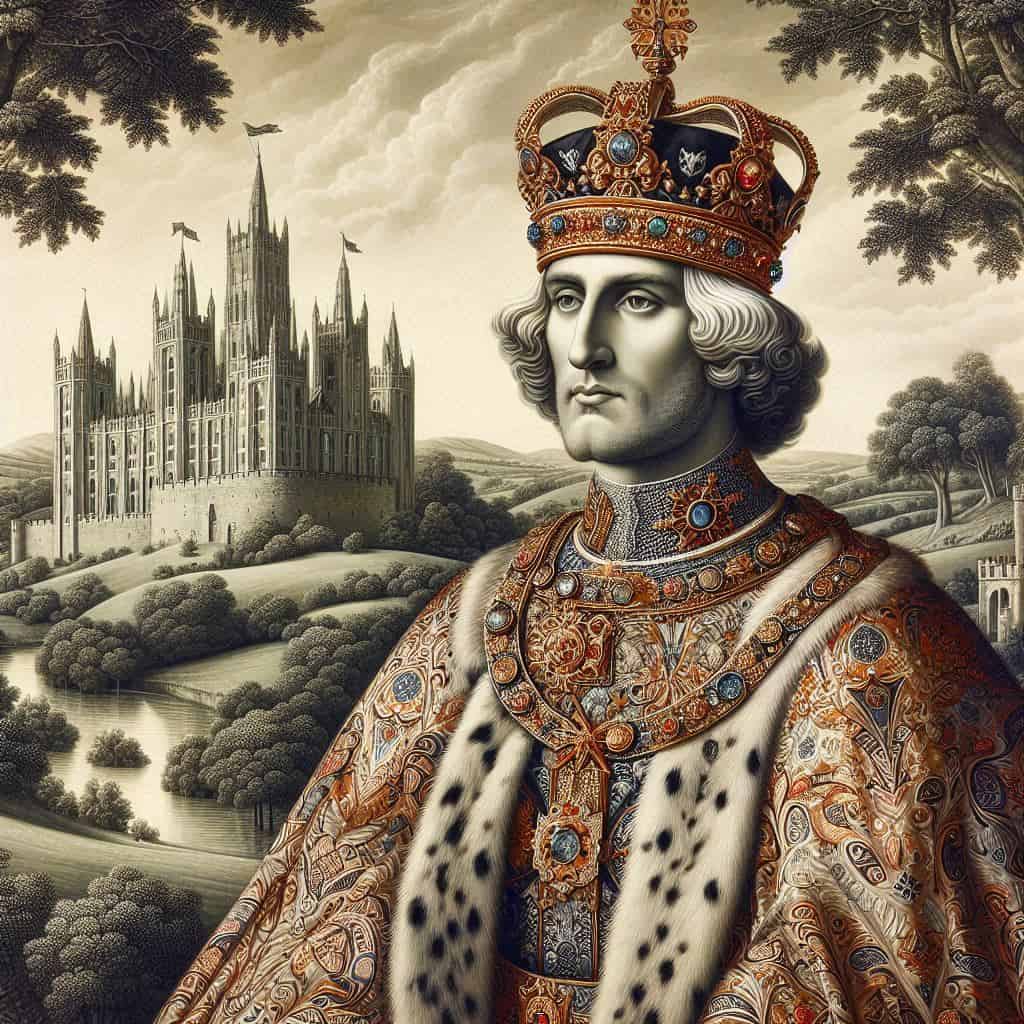
3. Æthelstan (924/5–939)
Æthelstan, the son of Edward the Elder, is widely regarded by historians as the first true King of England. He initially became ruler of Wessex and Mercia in 924/5, but it was his decisive actions in 927 that transformed the political landscape: he captured York, the last major Viking stronghold, bringing all English territories under a single ruler for the first time.
After unifying England, Æthelstan strengthened his authority through diplomacy, lawmaking, and military campaigns. In 934, he invaded Scotland, asserting dominance over northern kingdoms. When a combined force of Vikings, Scots, and Strathclyde Britons challenged his rule, Æthelstan defeated them decisively at the Battle of Brunanburh (937)—a victory celebrated in the Anglo-Saxon Chronicle as a defining moment in English history.
Æthelstan’s reign marked the emergence of England as a fully unified and influential kingdom. His legal reforms, international alliances, and military successes earned him recognition not only as the first king of a united England, but also as one of the most powerful rulers in early medieval Europe.

🛡️ Defenders of Their Realms
Early medieval kings protected their people from constant threats—Vikings, rival warlords, and foreign invaders. Their military decisions determined the survival and expansion of their kingdoms.
4. Edmund I (939–946)
Edmund I succeeded his half-brother Æthelstan and ruled from 939 to 946. His reign began with instability, as Viking forces reclaimed Northumbria and parts of the Midlands. By 942, Edmund restored English control over these territories, strengthening the unity established by his predecessors.
He later secured peaceful relations with Scotland, and he played a diplomatic role in European politics, helping to restore Louis IV to the French throne. Edmund’s reign ended abruptly when he was killed during a brawl at a feast in 946.
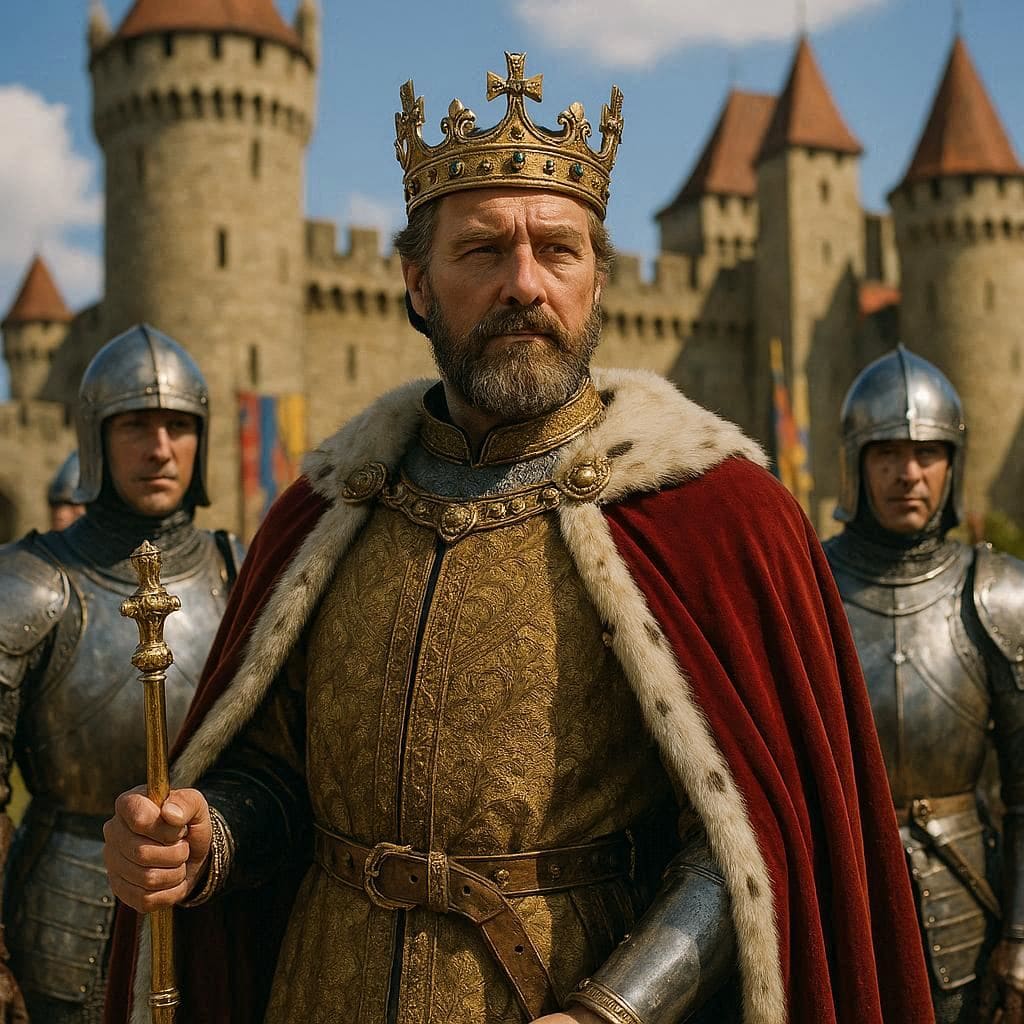
5. Eadred (946–955)
Eadred, brother of Edmund I, ruled from 946 to 955. Although physically frail, he proved politically strong. His reign was dominated by repeated unrest in Northumbria, where rival Viking leaders—including Eric Bloodaxe, the exiled King of Norway—claimed power.
Eadred’s campaigns eventually ended Viking rule there, and by Bloodaxe’s death in 954, Northumbria became firmly integrated into the English kingdom. Eadred died in 955, likely from a long-term digestive illness.
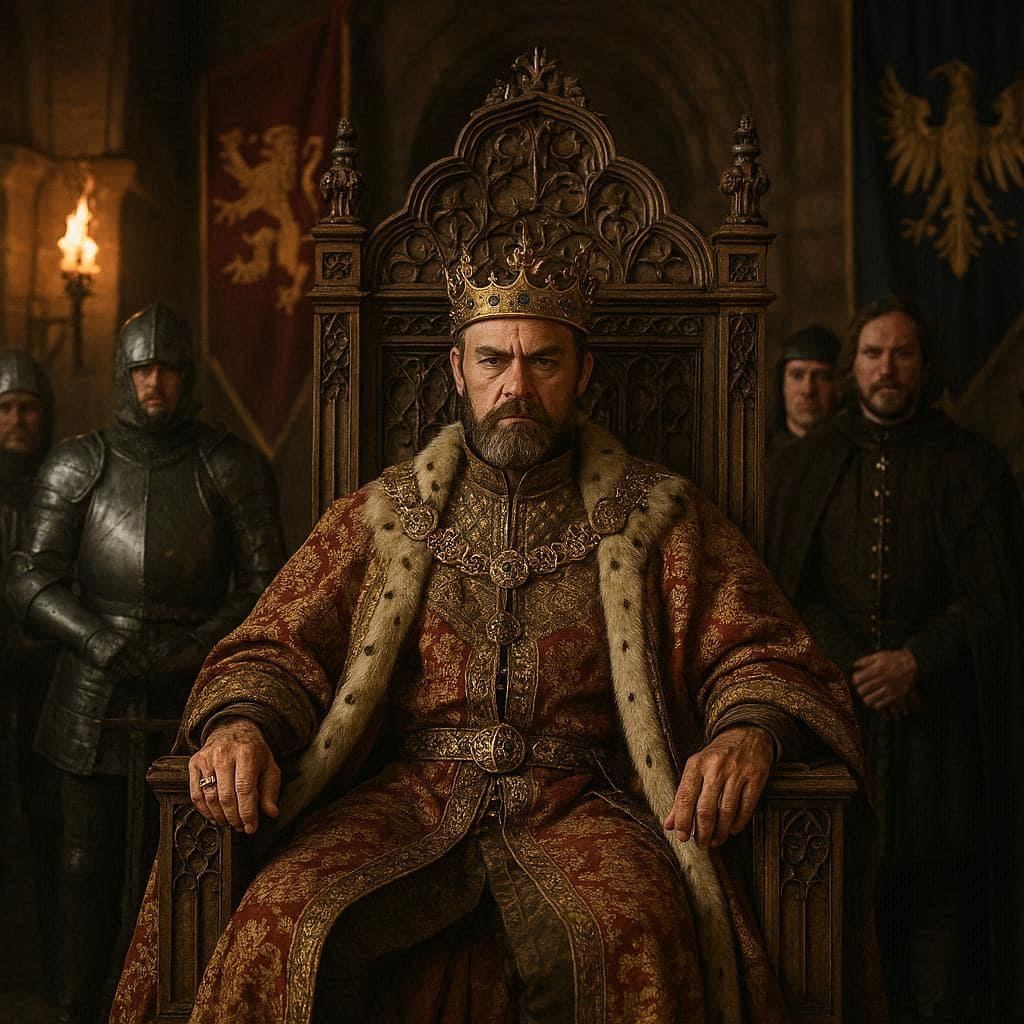
6. Edgar I (959–975)
Edgar, often called “Edgar the Peaceful,” ruled from 959 to 975. His reign was a period of remarkable stability and consolidation. English monasticism flourished under his support, contributing to cultural and spiritual renewal.
In 973, Edgar underwent a highly symbolic coronation at Bath, which helped establish the enduring traditions of English royal coronations. During his reign, other British rulers recognized his overlordship, strengthening the unity of the island.
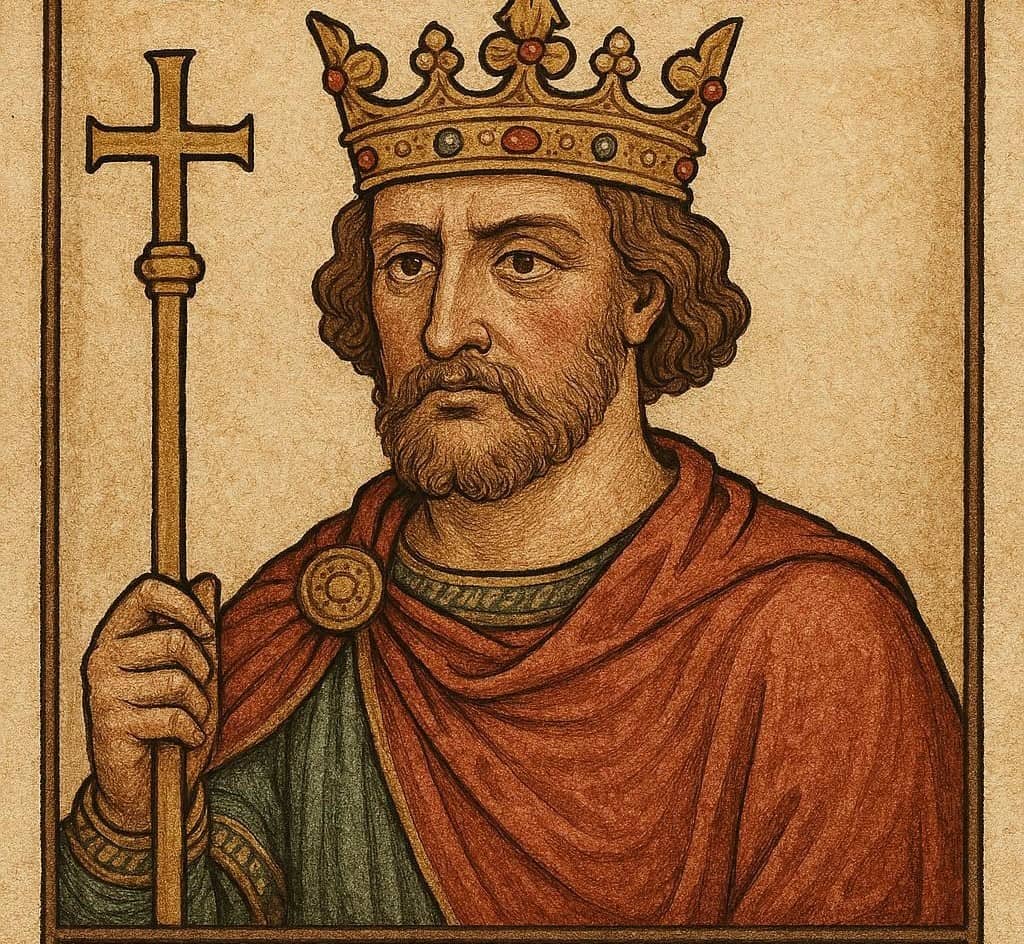
🏰 Foundations of Royal Authority
These early rulers established laws, administrative systems, and alliances that shaped medieval governance. Their legacies influenced everything from coronation rituals to the development of Europe’s first stable monarchies.
7. Edward the Martyr (975–978)
Edward, the eldest son of Edgar I, reigned from 975 to 978. His brief rule was marked by intense political conflict between reformist church leaders and powerful secular nobles. The tension weakened his authority and created instability across England.
In 978, Edward was murdered at Corfe, an act that shocked contemporaries and later earned him the title “Edward the Martyr.” His death cleared the path for his younger half-brother, Æthelred, to take the throne.

8. Æthelred the Unready (978–1016)
(excluding the short interruption during Sweyn Forkbeard’s reign)
Æthelred II came to the throne as a young boy in 978, amid widespread suspicion due to his brother Edward’s murder. His epithet “the Unready” comes from “unræd,” meaning “poor counsel,” referring not to his character but to the troubled nature of his rule.
His reign saw relentless Viking raids, which he attempted to counter through both warfare and the payment of large tributes (Danegeld). In 1013, Sweyn Forkbeard of Denmark invaded and briefly took the English throne, forcing Æthelred into exile in Normandy. After Sweyn’s death, Æthelred returned but struggled against renewed Danish attacks.
He died in 1016, shortly before the final Danish conquest under Cnut.

9. Cnut the Great (1016–1035)
Cnut, son of Sweyn Forkbeard, became king after defeating Æthelred’s son Edmund Ironside in 1016. His reign marked the beginning of a unified North Sea Empire, as he ruled England, Denmark, Norway, and parts of Sweden.
Cnut is widely regarded as one of the most competent pre-Norman kings. He stabilized the kingdom, maintained English laws and institutions, and fostered close ties between England and the Scandinavian world. In 1027, he traveled to Rome to attend the coronation of the Holy Roman Emperor, strengthening his international prestige.
His death in 1035 ended the unity of his northern empire.
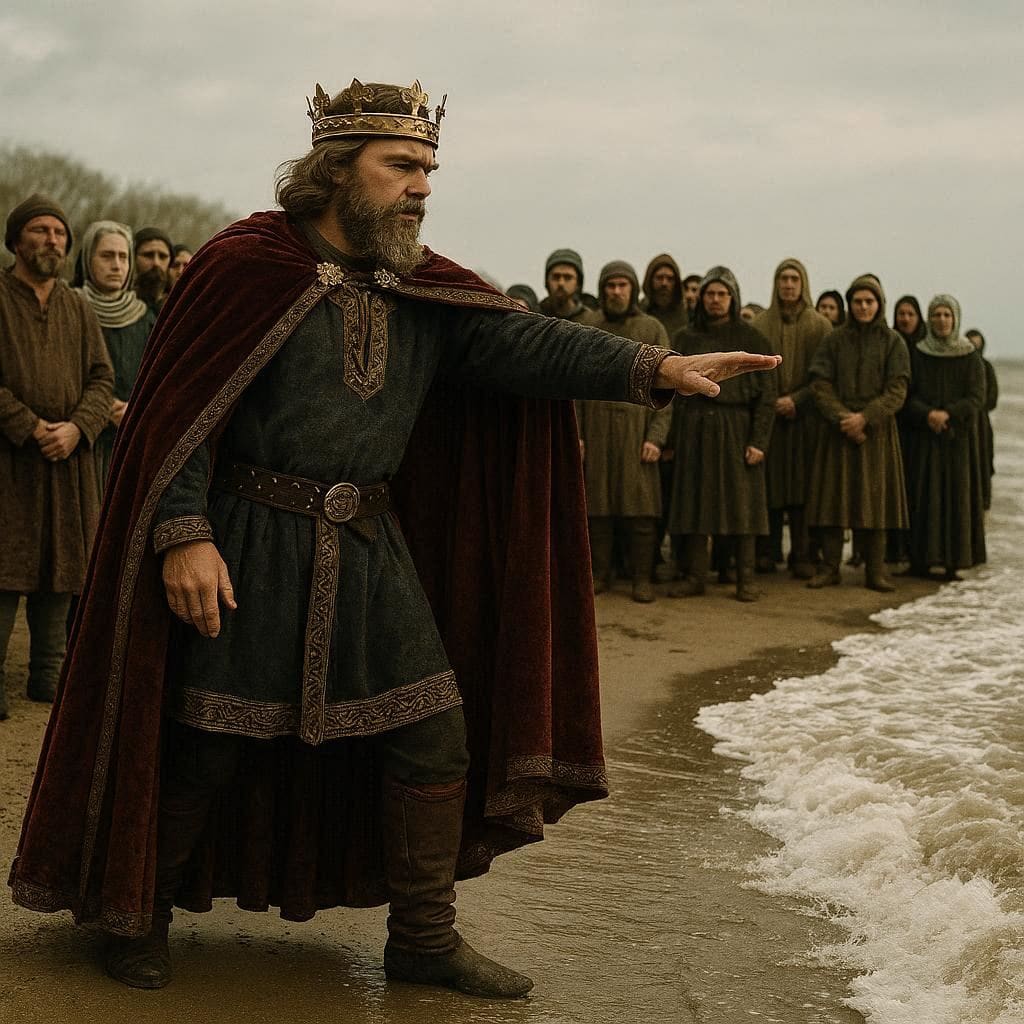
10. Harold Harefoot (1035–1040)
Harold Harefoot, one of Cnut’s sons, became king in 1035 due to the absence of his half-brother Harthacnut, who was defending Denmark against external threats. Initially ruling as regent, Harold quickly secured full support and became king outright.
His reign was marked by power struggles with Emma of Normandy (his stepmother) and the attempted return of her sons from Normandy. Harold ultimately consolidated control over all England until his death in 1040, which opened the way for Harthacnut’s return.
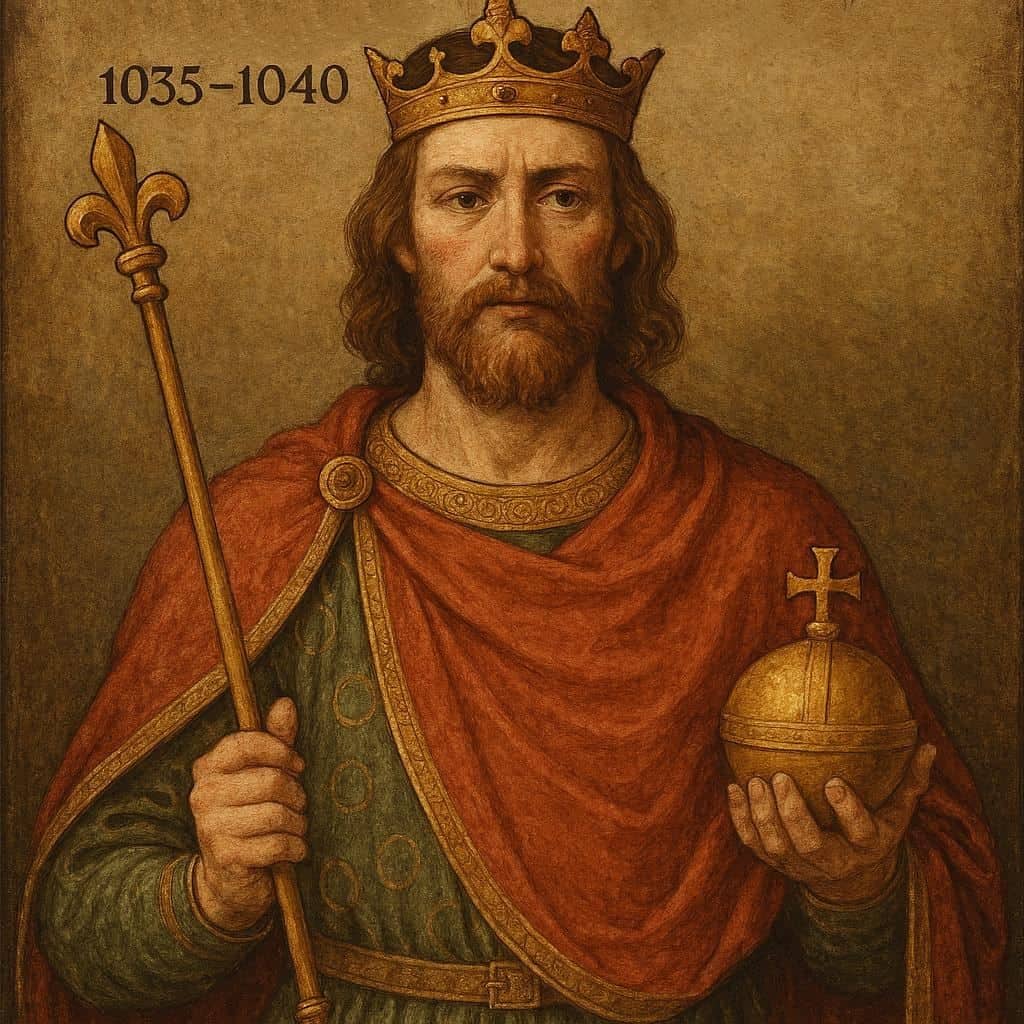
11. King Harthacnut (1040–1042)
On Harold’s death, Harthacnut, the son of Cnut the Great and Emma of Normandy, became King of England in 1040, following the death of his half-brother Harold Harefoot. By this time, he was already ruling Denmark (since 1035), making him monarch of both kingdoms.
His short reign in England was marked by heavy taxation, harsh reprisals, and an overall reputation for ruling with an autocratic and unpopular hand. One of his first acts was to punish towns that had not supported his claim during Harold’s rule—actions that alienated much of the population and nobility.
Despite his troubled governance, Harthacnut worked to secure the succession by inviting his half-brother Edward (the future Edward the Confessor) back from Normandy. Edward would eventually succeed him.
Harthacnut died suddenly in 1042, reportedly collapsing at a wedding feast after drinking—an event noted in both English and Scandinavian sources. His death ended the Scandinavian (Danish) rule in England and restored the House of Wessex to the throne through Edward the Confessor. became the King of England and kept the position from 1040 to 1042.
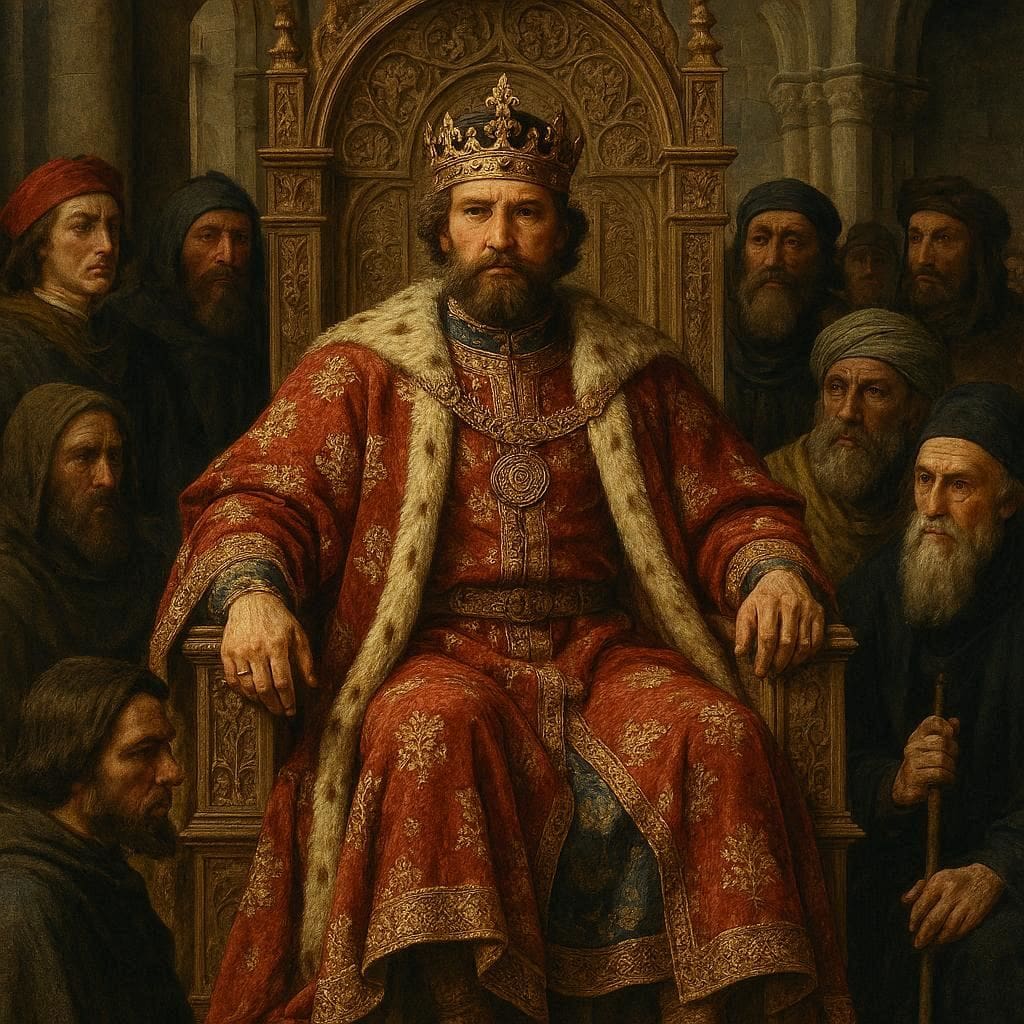
12. Edward the Confessor (1042–1066)
Edward the Confessor, son of Æthelred the Unready and Emma of Normandy, restored the House of Wessex to the throne in 1042. His reign saw the continued rise of powerful earls, especially the Godwin family, with whom he had a tense and often hostile relationship.
A deeply religious ruler, Edward oversaw the building of Westminster Abbey, which became a central symbol of English monarchy. However, he left no clear heir. His death in January 1066 sparked competing claims to the throne, ultimately leading to William the Conqueror’s invasion and the end of Anglo-Saxon rule in England.

Early Kings Summary
The early medieval kings of England were dominated by the House of Wessex, whose rulers gradually united the Anglo-Saxon kingdoms and held power through much of the early Middle Ages.
In the early 11th century, Cnut of Denmark seized the English throne and created a vast North Sea Empire, ruling England, Denmark, and Norway together. This brief Scandinavian dynasty reshaped the political landscape of northern Europe.
By the mid-11th century, the House of Wessex regained control under Edward the Confessor, whose reign marked the final chapter of Anglo-Saxon rule. His death in 1066 set the stage for the Norman Conquest, a turning point that transformed England forever.
🏰 Key Takeaways: Early Medieval Kings
- The early medieval period laid the foundations for Europe’s modern kingdoms by turning tribal societies into organised states. :contentReference[oaicite:1]{index=1}
- Kings like Alfred the Great, Æthelstan, and Edgar I unified lands, defended against invaders, and claimed royal titles for new national identities. :contentReference[oaicite:5]{index=5}
- Military conquest, strategic marriages, and religious legitimacy were key tools for early medieval rulers to build dynasties and authority. :contentReference[oaicite:6]{index=6}
- Defending territories from invasions — notably from Vikings and rival kingdoms — was central to establishing lasting rule. :contentReference[oaicite:7]{index=7}
- These kings created administrative and legal structures — such as royal courts, coronation traditions and unified kingdoms — that influenced the shape of Europe for centuries. :contentReference[oaicite:8]{index=8}
- Studying their reigns helps us understand the origins of European nation-states, monarchy, and formation of medieval society. :contentReference[oaicite:9]{index=9}
❓ Frequently Asked Questions
Who were the “founder kings” of early medieval Europe?
These were rulers who established the first stable kingdoms after the fall of the Western Roman Empire—figures like Clovis I, Alfred the Great, Charlemagne, and the early Anglo-Saxon and Scandinavian kings.
Why was this period so important for state formation?
Early medieval kings created new political structures, legal systems, and military networks that formed the foundations of future European nations such as France, England, and the Holy Roman Empire.
How did early medieval kings defend their territories?
They built fortifications, raised warrior elites, negotiated alliances, and led armies against threats like Vikings, Magyars, and rival kingdoms.
What role did Christianity play in early medieval kingship?
Conversion to Christianity strengthened a king’s legitimacy, connected them with powerful bishops, and linked their kingdoms to wider European culture and law.
How did marriages shape the rise of early kingdoms?
Strategic marriages forged alliances, expanded territory, united rival clans, and helped rulers establish long-lasting dynasties.
What lasting impact did these early kings leave?
Their legal reforms, administrative systems, and dynastic traditions shaped medieval Europe and influenced the emergence of modern states centuries later.
🧠 Early Medieval Kings Knowledge Quiz
⚔️ Glossary of Anglo-Saxon King Terms
Wessex
The powerful Anglo-Saxon kingdom ruled by Alfred and his successors.
Danelaw
The region of England under Viking control during the early medieval period.
House of Wessex
The royal dynasty that produced kings such as Alfred, Edward the Elder, and Æthelstan.
Norman Conquest
The 1066 invasion that ended Anglo-Saxon rule after Edward the Confessor’s death.
